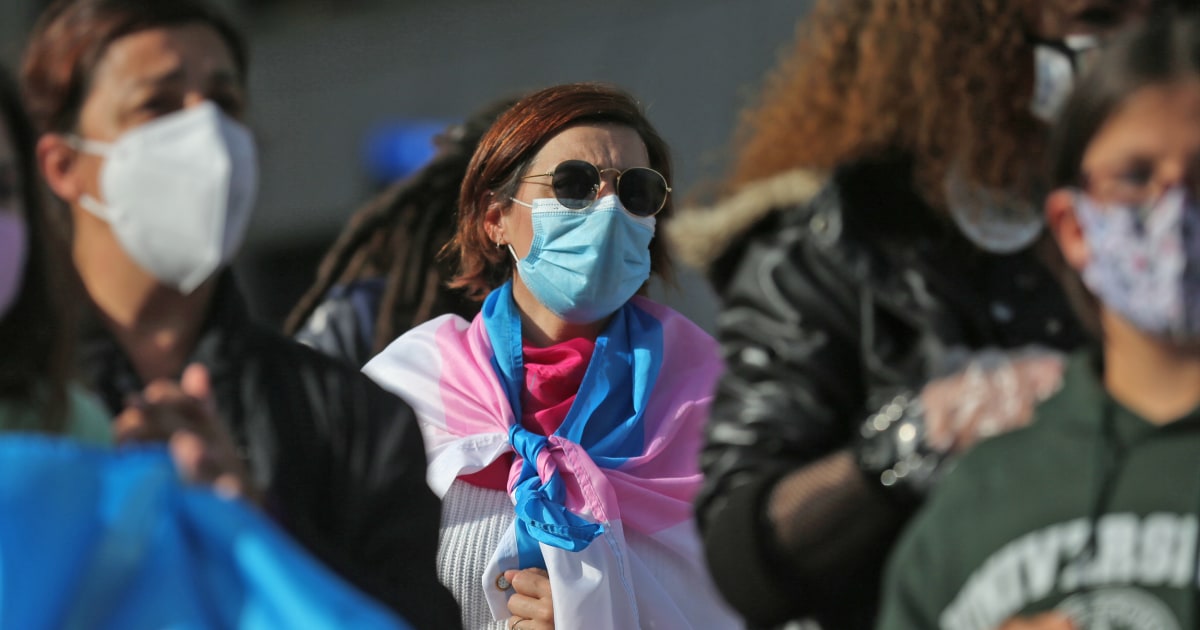
Transgender and nonbinary people are growing more and more visible with each passing year.
Just in the last year, Elliot Page let the world know he’s a trans man and appeared on the cover of Time magazine, while shows like “Pose” earned critical acclaim and popularity with an incredible cast of trans actors. Trans community advocates also garnered attention in the mainstream media, including Oluchi Omeoga, a Black trans leader with Black Lives in Minneapolis and an organizer with the Black LGBTQIA Migrant Project, who was on the cover of The New York Times Magazine; and Cheyenne Dorsow, the executive director of GLITS Inc. was profiled in Time.
And trans and nonbinary elected officials, including Minneapolis City Council Members Andrea Jenkins and Philippe Cunningham, Delaware state Sen. Sara McBride, Virginia Del. Danica Roem and Oklahoma Rep. Mauree Turner, continue to make political history.
Our community has also won groundbreaking legal and policy victories. Last year, the U.S. Supreme Court ruled in Bostock v. Clayton County that trans people are protected from discrimination in employment. (This case built on years of strategic litigation, including the Transgender Law Center’s 2012 case Macy v. Holder and decades of organizing by trans leaders across the country to assert our humanity.)
This year, there have been over 100 anti-trans bills proposed in state legislatures across the country, which is more than we have ever seen in one year.
Yet we cannot truly honor the Transgender Day of Visibility this year without acknowledging the work left to do.
The majority of trans people — particularly those who are Black, Indigenous and people of color, trans women and femmes, our elders, our youth, trans people living with HIV, trans people with disabilities, trans sex workers and migrants who are trans — are struggling to survive. These groups experience ongoing violence, harassment and discrimination in addition to the high rates of poverty and homelessness facing the trans community.
And, in 2020, at least 44 trans and nonbinary people were killed, most of whom were Black trans women and femmes.
Amid this violence, political attacks on trans people have escalated in recent years. It started with a wave of “bathroom bills” around 2015, attempting to criminalize which bathrooms trans people use, and intensified under the Trump administration’s relentless campaign to roll back the few rights and protections trans people do have and deny our very humanity — but it hasn’t stopped. Even with a new White House and a new Congress, these attacks have continued and will continue.
This year, there have been over 100 anti-trans bills proposed in state legislatures across the country, which is more than we have ever seen in one year. Most of the proposed legislation targets trans youth, both their access to life-saving health care and their ability to play sports as their true selves. Just this week, Arkansas became the first state to ban young trans people from accessing health care. Mississippi, Arkansas and Tennessee have already passed laws this year restricting trans kids from playing sports, and South Dakota Gov. Kristi Noem, a Republican, signed executive orders this week to do the same.
While there are still many people espousing hate and intolerance, there are so many more who support trans communities.
But in the face of these attacks and worsening conditions, trans people are doing what we have always done: We are keeping each other safe.
Long before visibility, and before we had any legal protections, Black and brown trans women — many of whom were sex workers and often living with disabilities — took care of their communities without institutional support. They housed one another and kept each other safe.
We saw this tradition continue over the last year, as trans people across the country became visible leaders in both fighting for our legal rights and humanity, and in providing aid, shelter and housing for one another during the Covid-19 pandemic.
Trans and nonbinary organizers developed solutions to keep one another safe when it was clear that the police and carceral systems never could. We also continued to dream up and create our own solutions to the problems our community faces. Last year, for instance, the Transgender Law Center (TLC) worked with a national coalition of majority Black and brown trans women to launch the Trans Agenda for Liberation to serve as a community-led guide toward the world trans and gender nonconforming people deserve.
And while there are still many people espousing hate and intolerance, there are so many more who support trans communities. Corporations have made — and continue to make — powerful and visible stances of support. For instance, nearly 400 large businesses, including Starbucks, American Express, General Mills and Amazon, have joined efforts to support the Equality Act.
We know on this day that greater visibility alone does not translate into justice and equity.
These stances are obviously not enough: We need businesses and donors to provide ongoing and consistent support to trans-led organizations. Grants from Gilead Sciences’ TRANScend Community Impact Fund (a unique national program that supports the safety, health and wellness of the trans community to help reduce the impact of HIV) and from the Levi Strauss Foundation’s Strategic Response Fund for vulnerable communities are vital to the community building work we do at TLC. It’s not just our organization that benefits from these collaborations. Estée Lauder, for example, also not only funds our work but uses TLC materials to educate their employees about the issues facing the trans community nationwide.
But more broadly today, only 0.03 percent of all foundation funding each year goes to trans-led organizations across the country. Corporations and individuals interested in contributing don’t have to look hard to find where to give: The TransJustice Funding Project has mapped out trans organizations across the country. Wherever you live, a trans-led organization in need of support won’t be far away.
We know on this day that greater visibility alone does not translate into justice and equity. The hate, intolerance and white supremacy that was emboldened over the last five years have not gone silent again. We can’t just “return to normal.” We must create a “new normal” where we embrace the leadership of BIPOC trans women and trans-led organizations, strengthen the alliances and partnerships that we have built up across movements and industries, and work to create a world where we are all alive, thriving and fighting for the liberation of us all.
Source: | This article originally belongs to Nbcnews.com










